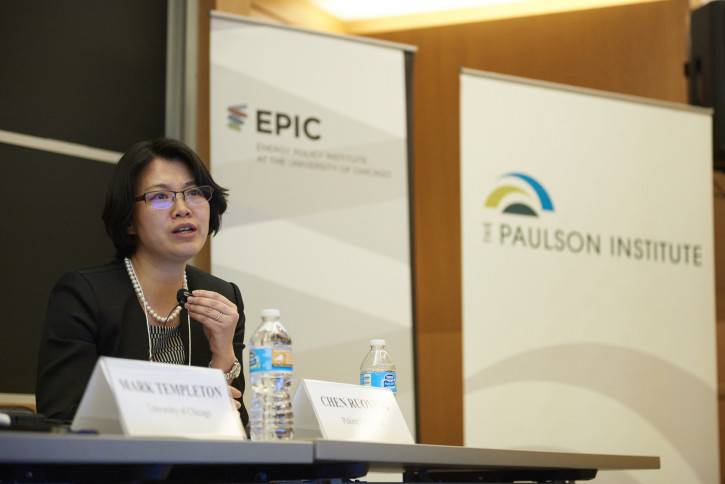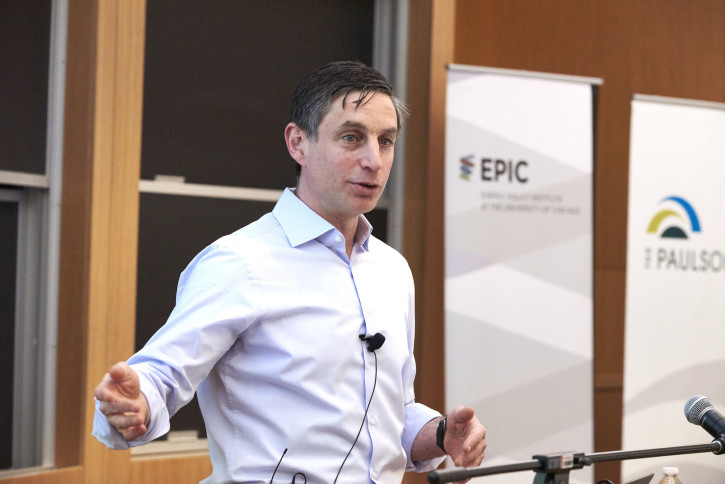
Both China and the United States are facing serious environment challenges in recent years. China is plagued by alarming air pollutions in more than 30 cities, including its capital Beijing, while the United States is troubled by droughts and floods across the country, as well as the drinking water crisis in Flint, Michigan. Although they have common goals when dealing with these problems—clean environment and a prosperous economy—they differ in methodology due to their unique political, legal and economic structures. Against this backdrop, the Paulson Institute cohosted the Pathway to a Clean Environment conference with the Energy Policy Institute at the University of Chicago (EPIC) and Tsinghua University to discuss how their challenges can be solved. During the conference, the participating experts gave valuable analysis and advice to China.
In China, there often exists a “tug of war” between the central and local governments when it comes to pollution management. National level government places more focus on cleaning the environment, while the local government prioritizes economic growth. Another is among the multiple departments that share environmental responsibilities, such as the National Development and Reform Commission and the Ministry of Environmental Protection. Uncoordinated, these departments sometimes offer disjointed or conflicting policies. Professor Zhu Xufeng from Tsinghua University’s School of Public Policy and Management also mentioned that the Ministry of Environmental Protection and local environmental authorities do not have enough authority, funding (less than $1 billion budget) or staffing (about 3,000 employees). Fortunately, as the University of Chicago’s Dali Yang pointed out, local environment authorities are feeling more responsibility and pressure to reduce pollution.

More pitfalls lie in the process of implementing environmental laws. As Qin Hu of the Environmental Defense Fund noted, one of the problems is that companies lack awareness of the legal and environmental landscape. He says that better enforcement requires greater transparency and information disclosure. In China, state owned enterprises wield significant political influence. Professor Dali Yang’s research revealed that in the early 2000’s things began to change and anti-corruption efforts began. Another challenge is the fact that companies will continue to pollute as long as the simple cost-benefit analysis of polluting tilts in their favor. A broader problem, according to Daniel Farber of the University of California, Berkley, is the common mismatch between the original intentions behind a law and its implementation, which can lead to under-enforcement and noncompliance. Recent legal changes in China attempt to change this. In 2014, China’s Environmental Protection Law (EPL) was amended to ramp up penalties for polluters.
There is also room for the public to join in. Koichiro Ito, an assistant professor from the Harris School of Public Policy, wondered how much people would be willing to pay for clean air. He analyzed demand for air purifiers and found that northern cities, which are more polluted, have a higher rate of demand for purifiers. He found the willingness to pay for an additional year of life expectancy $917, showing the potential of a public response to the current pollutions. However, although sixty percent of China’s groundwater is deemed either “bad” or “very bad,” and more than half of its lakes considered polluted by the Ministry of Environmental Protection, there has not been as firm a reaction as the water crisis in Flint, Michigan has produced. Tsinghua University’s Liu Bing offered some insights from China’s NIMBY (Not-In-My-Backyard) movement. First, there is a lack of widely accepted procedures and criteria for such environmental movements. Second, there are few independent third-party participants like NGOs to lend support. Third, and perhaps most importantly, NIMBY environmental movements are considered a political threat to the legitimacy of decision makers and the ruling class—and thus, almost always lead to overreaction by the state.
The conference highlighted the United States and China’s distinctive circumstances of pollution, and their unique solutions to the problem. It was only the first step, however, in bridging our understanding. Building off of this conference’s success, a follow-up conference will convene in June 2016 in Beijing.



